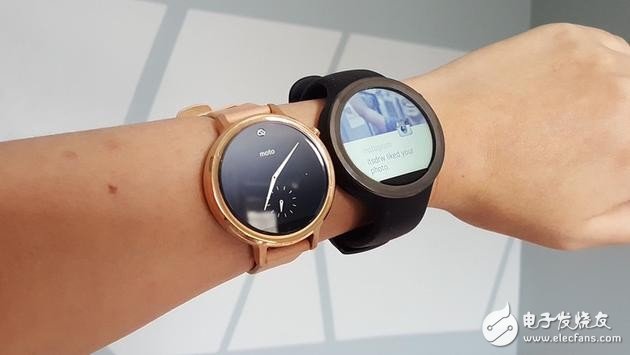This is not the first time Lenovo Moto has announced its suspension on smartwatch products in public. According to The Verge, Lenovo Moto confirmed that it will not launch a new smart watch based on Android Wear 2.0 early next year. Earlier, Moto also publicly announced that it will not launch a new version of Moto 360 this year - this is the development plan of Moto's intentional shelving of smart watch products after Moto launched the Moto 360 second-generation watch last year. The first generation of Moto 360 was released in the summer of 2014. Like other vendors, this is also a smart device based on Android Wear. Just a year later, Lenovo Moto released the second generation of Moto 360, which is full of combat power and introduced to the Chinese market. Since 2016, Moto has not been updated on smart watch products and has continued to put aside new product plans. Shakil Barkat, head of global product development at Moto, believes that the current smartwatch market may not be attractive enough to revisit the market in the future. The smart watch industry has a big background. Since Apple Watch joined last year, the media began to report that 2015 has become a year of development of smart wearable devices. Various mobile phone manufacturers have also introduced smart devices based on Android Wear. The competition is fierce, and Moto 360 was once called the most beautiful Android smart watch. The smartwatch industry is also very interesting – even though every year, every family is pushing smartwatch products, consumers of watches may not find it a “what is the egg†thing. Since 2016, the wearable industry has ushered in a trough. Even Google itself may have found some problems - Google has announced that the release of Android Wear 2.0 will be postponed until early next year. This may be related to Google's current business plan process, but Google has not explained the specific reasons. However, an article published by BI shows that Google internal sources told them that Google is still very interested in Android Wear, and that Google is likely to continue to launch its own branded smart watches like the Pixel series. IDC just released a Global Wearable Devices Industry Report in October, which announced that global smartwatch shipments were 2.7 million in the third quarter, down 51.6% from last year and 5.6 million in the same period last year. This may also give some warning to Chinese wearables. Huawei, a large enterprise with a branch of smart watch products, is also interested in shelving the development plan for smart watches. In this special period, Huami, inWatch, and go out to ask the hardware business structure of these startups is particularly important. However, there are still attackers, such as Fitbit. As the US smart watch giant, Fitbit is preparing to acquire Pebble for a price between $34 million and $40 million. Wearable products are more like a macro concept. Although the development of watches and bracelets has slowed down, VR and AR products have begun to emerge. Although the products themselves are not mature, we can probably imagine a trend in computing devices – future computing is everywhere, hidden in the body. The location may not be. This should be a new concept of wearable. Half-cell Polycrystalline Solar Panel Half-Cell Polycrystalline Solar Panel,340W Half Cell Solar Panel,High Efficiency Polycrystalline Solar Cell Panel,Half-Cell Poly Solar Panel Jiangsu Stark New Energy Co.,Ltd , https://www.stark-newenergy.com